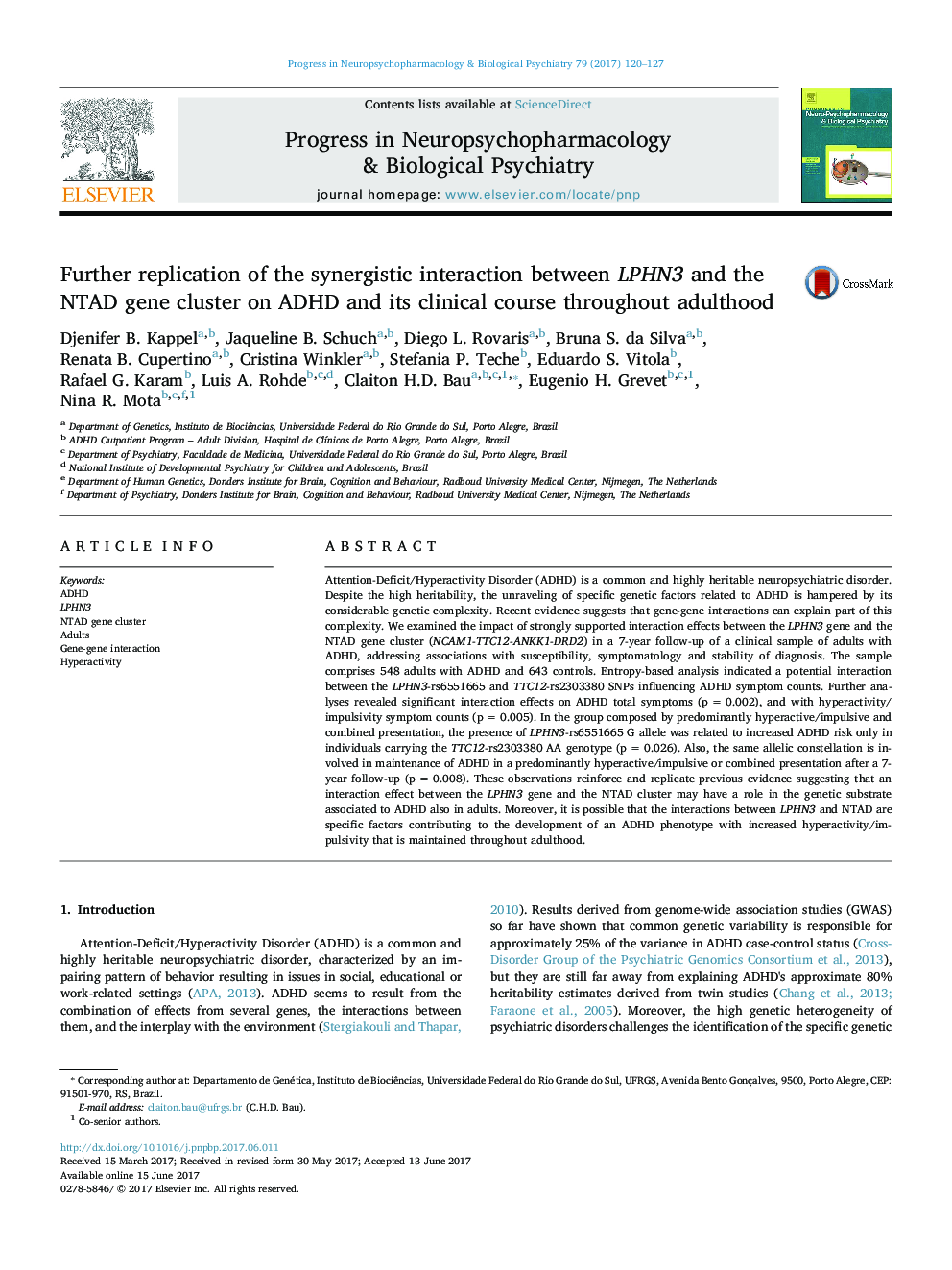| کد مقاله | کد نشریه | سال انتشار | مقاله انگلیسی | نسخه تمام متن |
|---|---|---|---|---|
| 5557913 | 1403191 | 2017 | 8 صفحه PDF | دانلود رایگان |

- We replicated LPHN3-NTAD interaction effects on ADHD susceptibility in adults.
- We demonstrate that the genetic interaction effects are related to a refined hyperactive/impulsive ADHD phenotype.
- These interaction effects may also influence the stability of ADHD presentation throughout adulthood.
Attention-Deficit/Hyperactivity Disorder (ADHD) is a common and highly heritable neuropsychiatric disorder. Despite the high heritability, the unraveling of specific genetic factors related to ADHD is hampered by its considerable genetic complexity. Recent evidence suggests that gene-gene interactions can explain part of this complexity. We examined the impact of strongly supported interaction effects between the LPHN3 gene and the NTAD gene cluster (NCAM1-TTC12-ANKK1-DRD2) in a 7-year follow-up of a clinical sample of adults with ADHD, addressing associations with susceptibility, symptomatology and stability of diagnosis. The sample comprises 548 adults with ADHD and 643 controls. Entropy-based analysis indicated a potential interaction between the LPHN3-rs6551665 and TTC12-rs2303380 SNPs influencing ADHD symptom counts. Further analyses revealed significant interaction effects on ADHD total symptoms (p = 0.002), and with hyperactivity/impulsivity symptom counts (p = 0.005). In the group composed by predominantly hyperactive/impulsive and combined presentation, the presence of LPHN3-rs6551665 G allele was related to increased ADHD risk only in individuals carrying the TTC12-rs2303380 AA genotype (p = 0.026). Also, the same allelic constellation is involved in maintenance of ADHD in a predominantly hyperactive/impulsive or combined presentation after a 7-year follow-up (p = 0.008). These observations reinforce and replicate previous evidence suggesting that an interaction effect between the LPHN3 gene and the NTAD cluster may have a role in the genetic substrate associated to ADHD also in adults. Moreover, it is possible that the interactions between LPHN3 and NTAD are specific factors contributing to the development of an ADHD phenotype with increased hyperactivity/impulsivity that is maintained throughout adulthood.
Journal: Progress in Neuro-Psychopharmacology and Biological Psychiatry - Volume 79, Part B, 3 October 2017, Pages 120-127